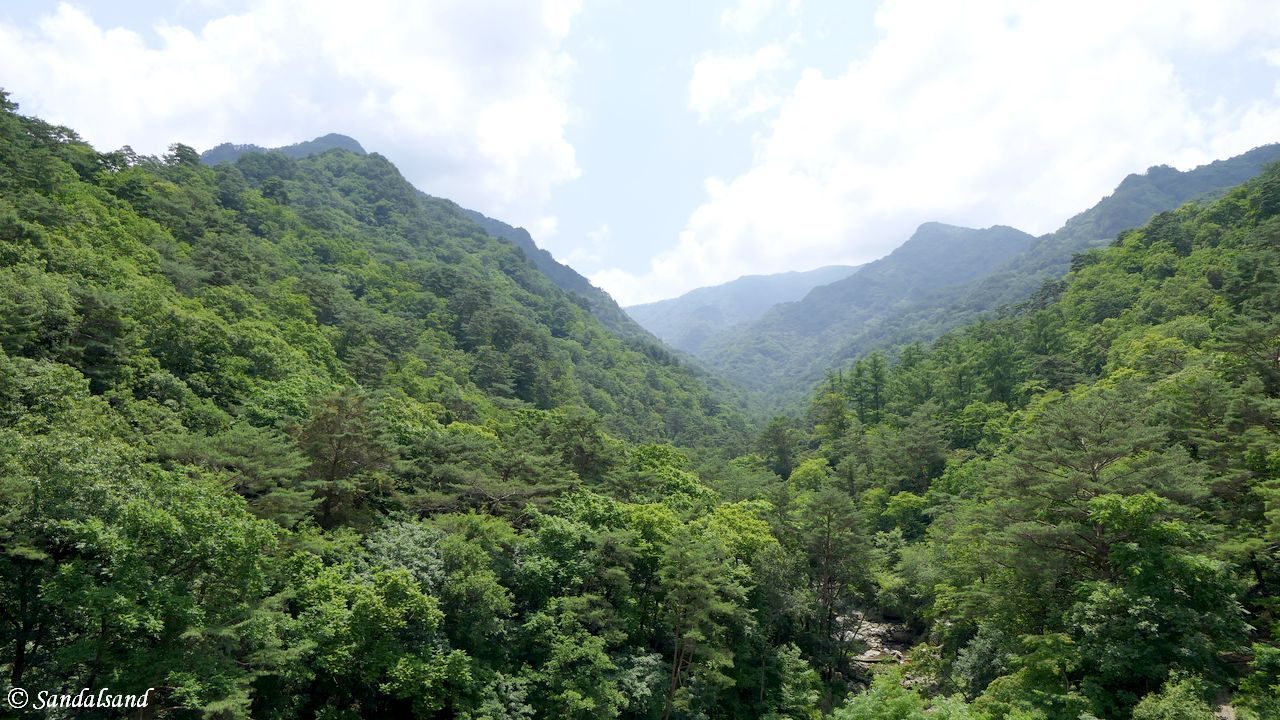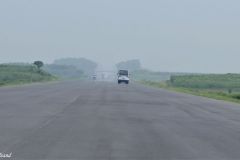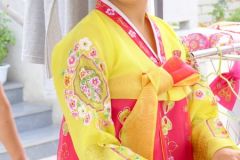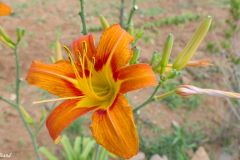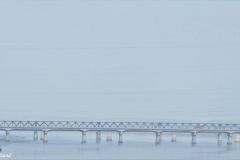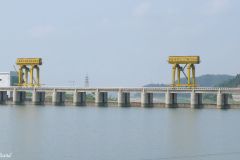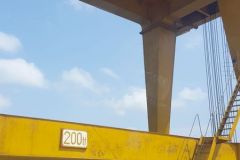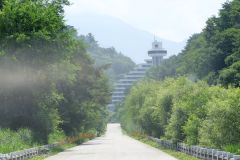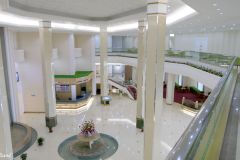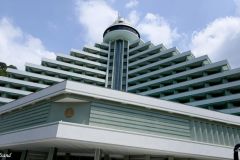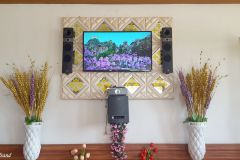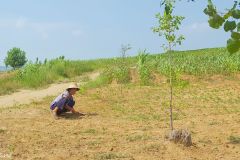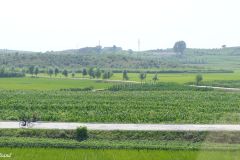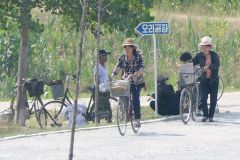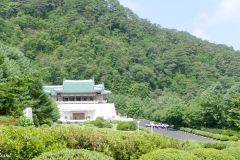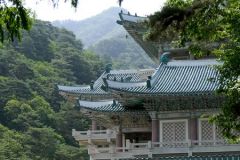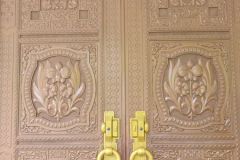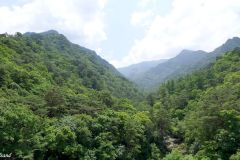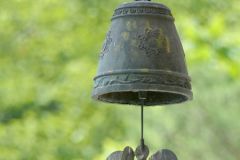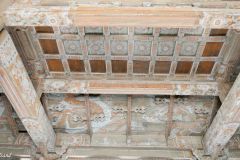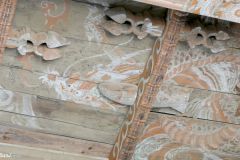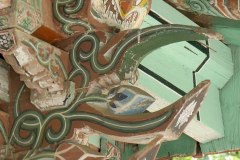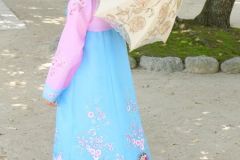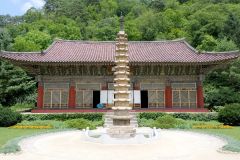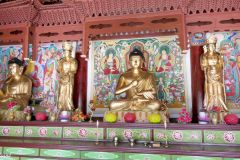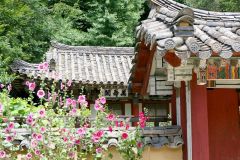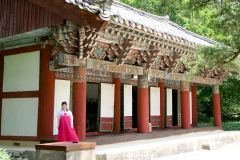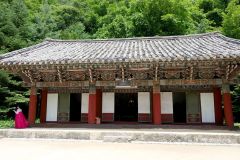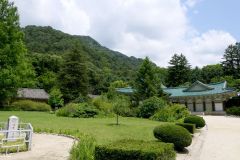For my North Korean hosts there was one purpose of this trip, namely to show a Western visitor how tremendously popular the ruling dynasty of the Kims is throughout the world. The evidence lies protected deeply inside the mountain vaults of the International Friendship Exhibition (Museum), the world’s most bizarre museum.
The drive
What for?
This was one of three day trips I took out of the North Korean capital of Pyongyang during my visit to the country. All trips as well as places I visited, are marked on the map at the end of this article. Even though it is kind of strange to drive 160 km one way for the sake of a museum, and then back the same day, this is what the DPRK tourist authorities puts on most tourist itineraries. That is, provided you stay in the country for more than a day or two.
I suppose I could have objected, but on the other hand I wanted to do “the classic”.
To me it was also very interesting to drive along vast rice paddies in a quite flat region, into the more hilly landscape and gradually even more mountainous north of the country. We first took the A1 Highway out of the capital to Anju. There we turned onto the National Highway 65 and followed the Chongchon River north. This river gave name to a decisive battle in late 1950, during the Korean War. The North Koreans with massive Chinese support forced UN troops back south to the 38th Parallel.
Our final destination was in the forested county by name of Hyangsan near Mt. Myohyang. The scenery became more and more breathtaking as we approached our destination.
The start, and then a rest
When we left Pyongyang early in the morning, I noticed a large group of women in identical blue dresses. They were singing and dancing on a large square, waiving red flags. In the background, beneath large residential blocks there was a large mosaic with the images of Kim Il-Sung and his son Kim Jong-il. What is this? – I asked my guides. The answer startled me. The women were members of a local women’s union. They would come out in the morning to wave goodbye to husbands on the way to work.
An hour later we had a break at a rest stop near Anju. We also stopped there on our way back, and were joined by Chinese busloads on both occasions. Like on the drive south to the DMZ, local ladies dressed in traditional costumes had set up stands, and would sell tobacco and snacks to the Chinese. I, and a Chinese guy, walked over to a very small field to watch an old lady bent over an extremely dry bed trying to weed whatever there was to weed. To me it seemed that nothing would grow there.
I, and I alone also went into the central building on the rest stop. A TV set showed propaganda videos in a large empty room. I picked up a chair and sat down to watch, photograph and film. A gripping tale of national heroism was unfolding on the screen, and the locals would come and ponder what this Western guy was doing.
Oil imports and hydro power production
North Korea is desperate for fuel. I suppose most of the oil they are able to import, goes into vast reservoirs inside the mountains. That fuel is for military preparedness purposes. At least, there are not many civilian cars on the roads – in fact, not even military vehicles were much visible on the roads I travelled in the DPRK.
The country also suffers from a shortage of electrical power, and power cuts and rationing is quite common. I noticed that a string of hydroelectric power plants had been built on the Chongchon River. I was there in July and the river was running very low, so there cannot be much power coming out of those turbines. North Korea depends heavily on coal mining for its own consumption and for export to China. This is a necessary boost to their revenue. The country is particularly rich on the purest form of coal, anthracite.
“Exporting the resources of the country is as good as selling the self-respect of the nation.” (Kim Jong Un Aphorisms vol. 1)
A strange empty hotel
The Koreans have had an aspiration to develop the Mt. Myohyang area into a modern and large tourist destinations. Due to international sanctions (or should we say, due to North Korean aggressive politics provoking the international community to impose sanctions), there are very few tourists around.
I had lunch at the 5-star Hyangsan Hotel. It is a big 15-storey pyramid-shaped building with shining brass and marble interior. The hotel offers all facilities you could dream of, or so they say.
I was shown into one of the restaurants, a very big, open space with round tables. A Chinese group was finishing their lunch at the far end, and I noticed two familiar faces. Two Swiss guys I had lunched with the previous day near the DMZ in the south, were having a meal as well. So I joined their table. They had actually stayed the night here, as the only guests in the entire hotel. There are very few tourists in North Korea these days, even though Chinese authorities have encouraged its citizens to go.
International Friendship Exhibition (Museum)
Introduction
From the car park one is able to see two museum entrances. The one on the right is the entrance to the Kim Jong-il museum, and the one on the left is the oldest and most important one. I was given a choice between them and decided on the latter. This museum keeps all kinds of treasures and gifts offered by foreign dignitaries and other visitors to North Korea, to Kim Il Sung, Kom Jong-il and also to the present leader Kim Jong-un.
I was greeted and welcomed by a female guide, who spoke very good English, and were let inside what looked like a vault. Photography was not allowed inside and I had to let go of my cameras at the entrance. The museum consists of a vast number of halls, connected by long marble corridors and with something like 100,000 gifts on display. No one knows the real number. Apart from the entrance and the back, everything is kept deep inside the mountain. My guides would not even confirm this matter of fact. The museum must have cost a fortune to build, and expensive to maintain.
“Kim Jong Il’s patriotism is the most fervent and warmest love for our socialist country and people and for the most earnest and self-sacrificing devotion for the sake of the prosperity of the country and the well-being of the people.” (Kim Jong Un Aphorisms vol. 1)
Bow and admire
One is obliged to bow in front of wax statues of the great leaders, one is led through the halls with gifts behind glass walls or not, and one is left with the notion that the Kims are the most popular leaders in the world. At least, that is what the North Korean citizens who are awarded with a visit here, are led to believe. Foreigners would view it otherwise.
To us it is quite strange that a gift to a host is interpreted as a sign of admiration.
I asked for a walk through the African section and the European one, just to find what Norwegian gifts that would have found their way to the DPRK. It is quite clear that a lot of gifts held a very high quality in terms of craftsmanship. The Norwegian gifts were interesting in a way – a couple of glass Viking ships. More importantly it was interesting to see who the donors would be: The Norwegian Communist Party, the Norwegian-Korean friendship association, and a parliamentary delegation from the Norwegian Labour Party in the 1970’s. (My guides were very eager to find out how important that party really was.)
On the whole, the museum was filled with gifts from former dictators around the world: Africa, Eastern Europe and Russia, China and so on. They are all gone. However, their gifts are still intact inside the mountain vaults in North Korea. Forever and ever. On the positive side, this is a museum of the world. I would believe that most countries, if not all, are represented. Like I said, the quality of the craftsmanship behind each and every gift, seems to be very high.
Images
I have been to many countries, to hundreds of museums, but this was the strangest I have ever been to. It is a pity that I could not take any pictures.
“Ours is a country of the eternal Sun that holds Comrades Kim Il Sung and Kim Jong Il in high esteem” (Kim Jong Un Aphorisms vol. 1)
Pohyonsa Buddhist Temple
The Pohyonsa Buddhist Temple is just a couple minutes drive from the museum. It is a national heritage and has a rich history. Founded under the Koryo dynasty in the beginning of the 11th century, it became one of the most important centres of Buddhism in the northern part of Korea. US bombing during the Korean War did much damage to the temple. Like in the museum, there are many female guides in traditional costumes attending the facility. I was guided around the facility by one of them.
There are 200 Buddhist monks in the DPRK, and 20-30 of them live here. According to my guides there is freedom of religion in the DPRK. However, religious sentiments are not widespread in the country. My guides would point out that religion became very unpopular after the Korean War. After all, prayers did not stop the massive bombings on worshippers. Christians are also freely allowed to worship their religion. However, it is a serious criminal offence to bring in a bible or two to the country.
The temple was a revelation and a most wonderful experience compared to the kind of artificial exhibition in the museum described above.
Read more
Read all North Korea entries.
This is the map of my travels in the Democratic People’s Republic of Korea (DPRK), or simply North Korea. The blue line on the map shows the route to the north. This is a drive of about 320 km for the return trip.

